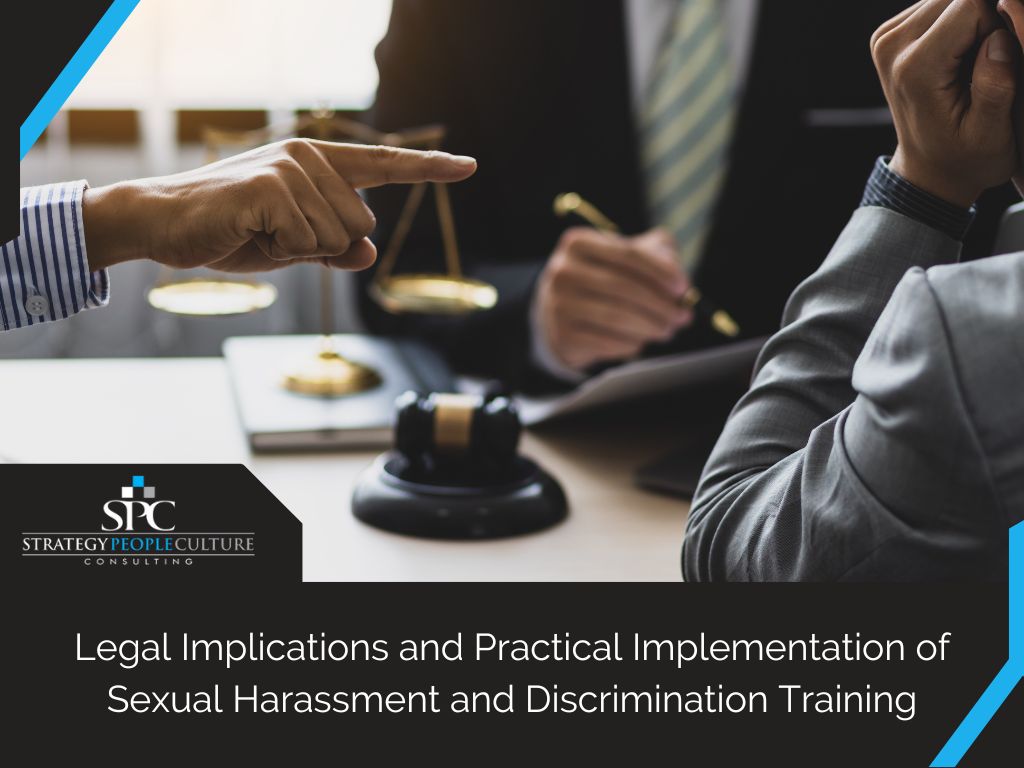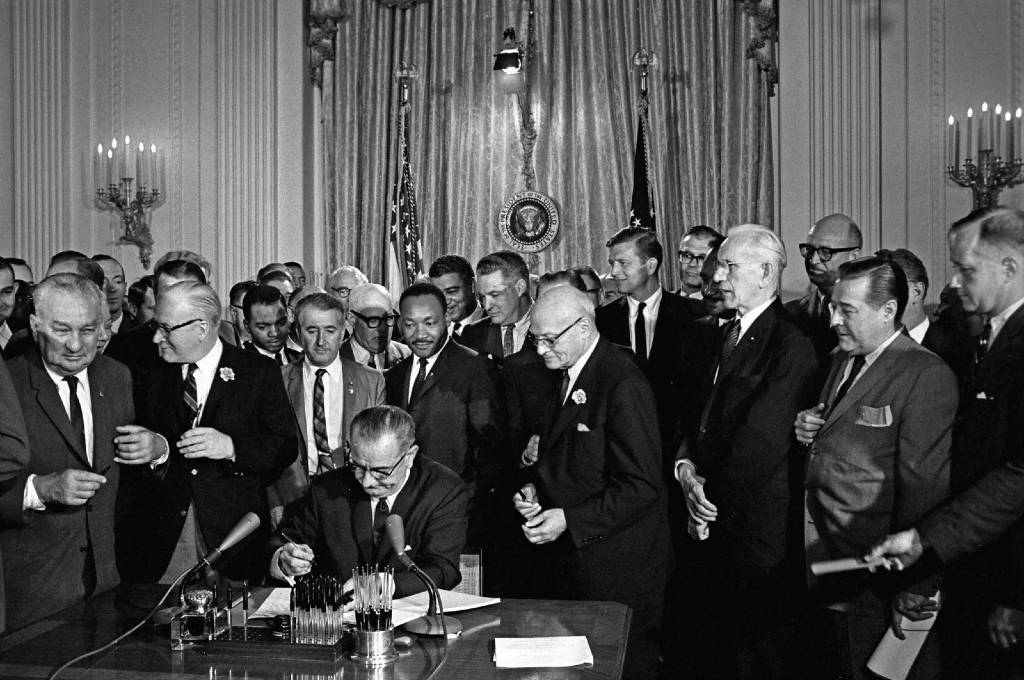Legal Implications and Practical Implementation of Sexual Harassment and Discrimination Training

In 2022, President Joe Biden made it law in this country prohibiting mandatory arbitration for sexual harassment claims. This means that employers may be more likely to fight claims in court. This is yet another reason employers should focus on what they can do to prevent sexual harassment and discrimination altogether.
Below, I’d like to share some important legal implications of sexual harassment and discrimination training with your organization, as well as some tips on practical implementation strategies:
1. Legal Compliance

Image Source: britannica.com
The Civil Rights Act of 1964, in concert with many other subsequent laws, decrees employees in the United States have a right to be free from sexual harassment or discrimination in the workplace. This is undeniable.
Providing this training is a clear legal mandate in some jurisdictions in the country. States such as California, Connecticut, Delaware, Illinois, Maine, and New York require all employers to provide sexual harassment training, typically for new hires and on a periodic basis, such as every year. The legal requirements vary from State to State and fluctuate further whether you are a public or private employer. Regardless of your industry, your business model, or the composition of your workforce, the law may demand you do this training.
If your company does not employ people in States where doing this training is the law and you think you do not need this training, read on!
2. You’re Not Under a Rock
Whether you religiously read newspapers, listen to news broadcasts, read business journals, or just casually observe what is happening in the world, it is hard not to have heard stories of issues around sexual harassment or discrimination. Often, when I deliver training, I ask the question of audience, “Have you or someone you know been subjected to either sexual harassment or discrimination at work.” It is very common to have affirmative response rates in the 90% + range of participants.
This is an issue, period. When these issues percolate at work, they create stress and anxiety for employers and employees alike.
3. Risk Management
Even if your employees, consultants, interns, and any other human employment category you engage with does not work in a State with the regulatory compliance mandate for sexual harassment and discrimination training, federal law provides employers defense mechanisms against claims if you do provide education and training on sexual harassment and discrimination in the workplace. If you have a claim, whether you are going to fight the claim in court or try to settle the issue privately, having this training or not will almost certainly improve or weaken your defensible position. In fact, recommending companies do this training is the one area I see agreement from most plaintiff and management-side employment attorneys on.
4. Issue Prevention
The goal of sexual harassment and discrimination training is simple… to prevent the behavior and if the behavior does happen, educate your workforce to identify and do something about the potential behavior to minimize the impact on individuals and the whole organization.
5. Bottom Line Savings

Today, the delivery of sexual harassment and discrimination training comes in many forms and sizes. From in-person instruction to live, virtually-based education to technologies that use combinations of computers, smartphones, videos, and various other interactive tools. If you have experienced a claim, I would imagine you would say the hard costs you spent dealing with such a claim were greater than the hard costs you would incur to do the preventative training. Ironically, one of the conciliatory elements of settlements often involved subsequent implementation of sexual harassment and discrimination training.
And the savings go well beyond the actual physical dollars. Read on!
6. Negative Public Relations
What if your name or company was mentioned in the news because of sexual harassment or discrimination matters in the workplace?
Think about it!
7. Employee Retention

Most people work because they need to, at least in part, earn a living. That said, where do terms like, The Great Resignation or There is no employee loyalty anymore or Toxic Workplace Culture emanate from? A workplace that takes sexual harassment and discrimination issues seriously will undoubtedly be more effective at employee retention over the long term.
8. Employee Recruitment
Given a choice of working for a company where sexual harassment or discrimination is permitted versus a company where this behavior is not permitted, which do you think prospective employees will choose?
If you are asking yourself how a prospective employee would know, visit companies like Glassdoor and network with families and friends of your current and past employees to learn what they heard about your company.
9. Operational Productivity

Non-work distractions cost employers $650 Billion per year. Suppose you have an employee who believes they have been subjected to sexual harassment or discrimination. In that case, you better believe that the employee is not 100% focused on the job and is, at minimum, mentally distracted by the negative feelings associated with sexual harassment and discrimination. Beyond that impacted person, what are other employees talking about around the company? Each minute, hour, and day your employees are focused on non-work items at work is lost efficiency. Think about this: the next time you use the cost of having employees spend an hour or two in sexual harassment and discrimination training, what is the opportunity cost of not investing in this training?
10. DEI is Not Sexual Harassment and Discrimination Training
In 2021, approximately 83% of companies have undergone some level of initiative around diversity, equity, and inclusion. As a consultant with significant experience and expertise on sexual harassment and discrimination issues, it is incredibly important to point out that these two important efforts are not the same thing. Focusing on all three elements, Diversity, Equity, and Inclusion is fundamentally good, however, focusing on these does not replace the need for quality training on sexual harassment and discrimination. This should not be an either-or type of decision but rather a holistic effort.
At Strategy People Culture, we have extensive experience providing training on sexual harassment and discrimination in the workplace. We may be able to help you and your business, please call us at (833) ROCK – SPC (833-762-5772) or email us at info@strategypeopleculture.com.
Published: March 7, 2022
Updated: October 10, 2024
